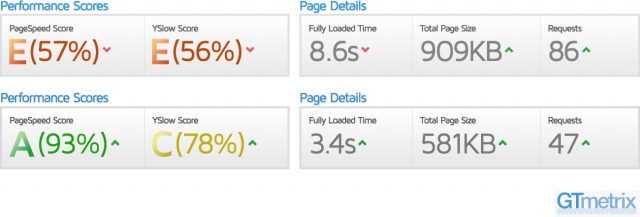How to Assess the Success of a Website Redesign
Not all website redesigns are created equal. In many cases, updating a website is the obvious starting point for addressing technical issues, modernizing design and usability, or updating your brand. Done correctly, a new website should offer a boost to your overall business.
Key metrics to look at when assessing whether a new website is successful:
- Site speed
- Organic traffic
- Usability
- Conversions
Each of these metrics can be tackled by answering the questions below.
How do technical benchmarks compare against your previous site?
By analyzing site speed, on page scripts, image optimization, outdated plugins, and even the platform the site is hosted on, you can get a pretty accurate picture of whether the new website offers an improvement over what you had before.
Unless you’re adding massive new functionality or downsizing your firm, there shouldn’t be any reason to take a step backwards in terms of site speed or hosting. Moving your hosting platform can potentially tank your site, and developers with no understanding of how search engines actually work can build a nice looking site on a terrible foundation.
Ideally, your new website should only show improvements or equivalencies when it comes to technical benchmarks.

Are more people finding the site organically?
Although it’s not uncommon to see a dip in traffic following the launch of a new website, one of the best indicators that things are going well in the search engines is an increase in organic traffic.
All pages you’re trying to drive traffic to should be indexed in Google (and the search engine also rans) and getting visitors. Post launch increases in organic traffic are a great indicator that smart decisions were made during the website redesign process.
Do potential clients find it easier to navigate?
You want your new site to be as easy to use as possible. Prospects shouldn’t be struggling to find information or get to the appropriate internal pages. Without using tools like Hotjar to monitor user sessions, the best way to gauge the performance of your new website is by comparing bounce rate, average page views, and time spent on site against the previous iteration.
If people are less likely to leave, looking at more of your content, and spending longer on your new website, that’s a great indicator that things are going well.
How do your conversion rates compare with the old site?
Even if traffic is up and people are spending more time interacting with your new site, it’s not a true win if they’re not requesting your services. By comparing the old site’s conversion rates against the new one you’ll get an accurate picture of the incremental improvement between the two.
Regardless of traffic, if a higher percentage of visitors are reaching out to learn more about whether your firm can help them, it’s a strong signal that your redesign improved your ability to generate new business.
Is it helping you achieve your business goals?
The ultimate goal of your redesign is to get more business. This can mean more clients, higher value clients, or even a shift in which portion of your practice you’re trying to prioritize. Although it’s not always directly tied to driving revenue, that’s definitely the most common goal.
Very few firms are effectively tracking marketing on a cost per client level, but even if it’s only being looked at on a cost-per-inquiry basis, reducing the cost you pay for each qualified lead shows the money you spend on a website redesign was an investment rather than an expense.
Summary
Website redesigns can be extremely expensive and failing to take a data driven approach is a great way to burn money and create massive frustration. Projects of this scope should be approached as an investment in your business and any good agency will work with you to measure the results of their work, continue to refine and improve post-launch, and push for decisions during the redesign process that will not just “look nice” but actually help your firm be more successful.
